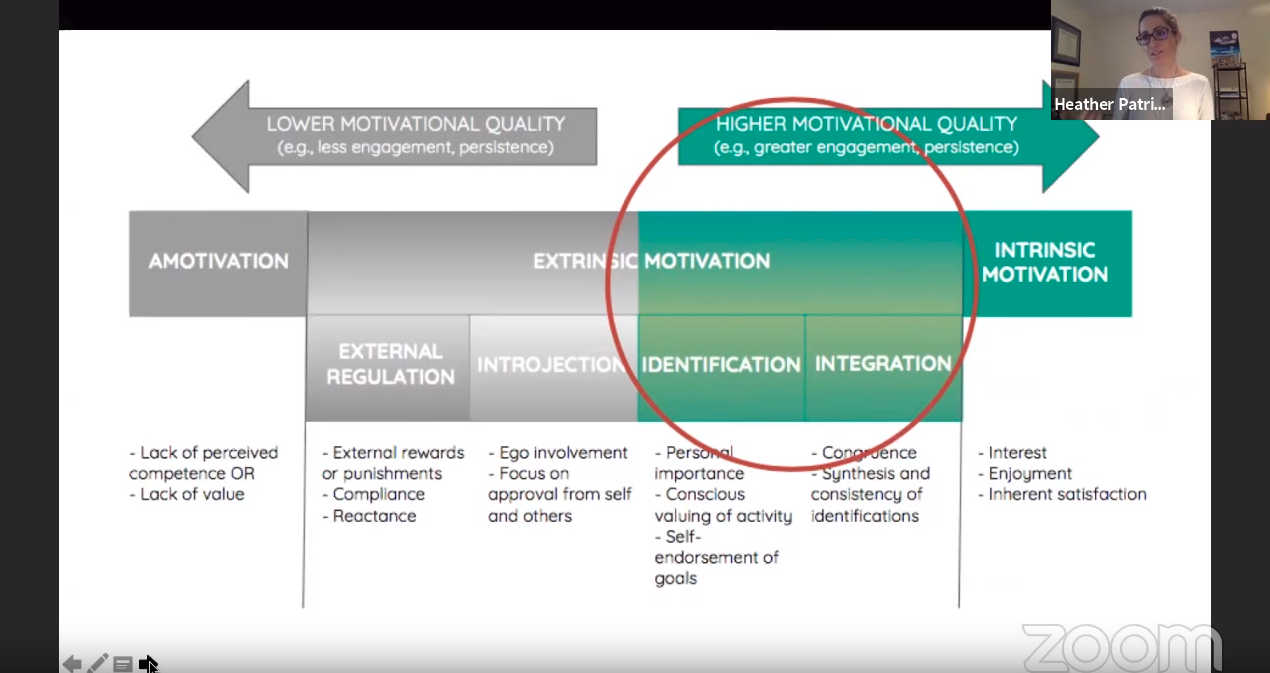Digital technologies have an impact on our motivation and psychological wellbeing. SDT provides technology designers with robust theory and principled methods for incorporating wellbeing psychology into technology design in order to improve that impact. Once we understand that wellbeing, motivation and meaningful engagement are all mediated by autonomy, competence and relatedness, we can measure the extent to which each of these needs is met within a user experience in order to improve it.
Within the technology context, basic psychological needs can be supported or thwarted concurrently at different levels of granularity (eg, autonomy-support at the interface level v. at the life level). Therefore, in order to account for parallel effects on needs that can co-occur, the METUX spheres model proposes that BPNs should be analysed from within sixspheres of technology experience: adoption, interface, task, behavior, life, society).
The METUX Spheres of Technology Experience
The METUX spheres allow the range of granularity in technology experience to be taken into account, allowing for interacting and contradictory impacts on need satisfaction. For example, a user of a social media app or digital game may experience need satisfaction during use, as autonomy and competence are repeatedly satisfied in the moment, but if compulsive use occurs, the person may begin to experience need frustrations within the life sphere as work and relationships are impacted and they experience a diminishing sense of control. Analysis of a technology at multiple spheres allows these contradictions to emerge.
Adoption includes the time before technology use, form when a person first becomes aware of a digital product to when they acquire it. SDT predicts that users will be likely to adopt a new technology to the extent that they are autonomously motivated to do so, and this is influenced by the extent to which they anticipate a technology will satisfy their needs.
Interface includes the navigation, controls and interaction elements of a technology. Likely positive outcomes of need satisfaction at this level include sustained engagement, high usability scores, and user satisfaction.
Task involves the tasks that a technology supports or facilitates. In the example of a fitness app, a task might be step tracking. A well-design interface might support BPNs, but the task of step counting itself may cause competence frustration if it involves a step goal that is unrealistic for the user’s fitness level.
Behaviour involves the overall activity or domain to which tasks contribute. In our fitness app example, the overall behaviour may be exercise, in which case, designers might ask, “to what extent does the app improve need satisfaction within the experience of exercise?” Positive outcomes of need satisfaction may include satisfaction and engagement with the behavior, as well as context-specific outcomes like improved health, improved performance, or learning outcomes, depending on the context.
Life includes aspects of a person’s life beyond the technology, including impacts on relationships, life choices and overall wellbeing.
Society refers to the indirect and cumulative effects of a technology’s use on non-users, and on larger systems such as communities, employment, democracy, etc. The question is, to what extent psychological needs are being collectively impacted. Accounting for this sphere takes multi-disciplinary and multi-stakeholder collaboration, and methods are being developed in areas such as AI ethics.
Meaningful engagement, motivation and wellbeing represent three holy grails for designers of technologies, but their mediators are often viewed as residing within a black box. What SDT research shows is that Basic Psychological Needs are in that box. Technology designers and developers can leverage psychological needs for ideation, troubleshooting and as specific measurable design targets in order to improve digital experience, increase positive outcomes and improve wellbeing.
For example, the Wellbeing Supportive Design Heuristics (Peters, 2022) provide actionable strategies for supporting psychological needs in technology design and these are based on the research across domains in SDT.










